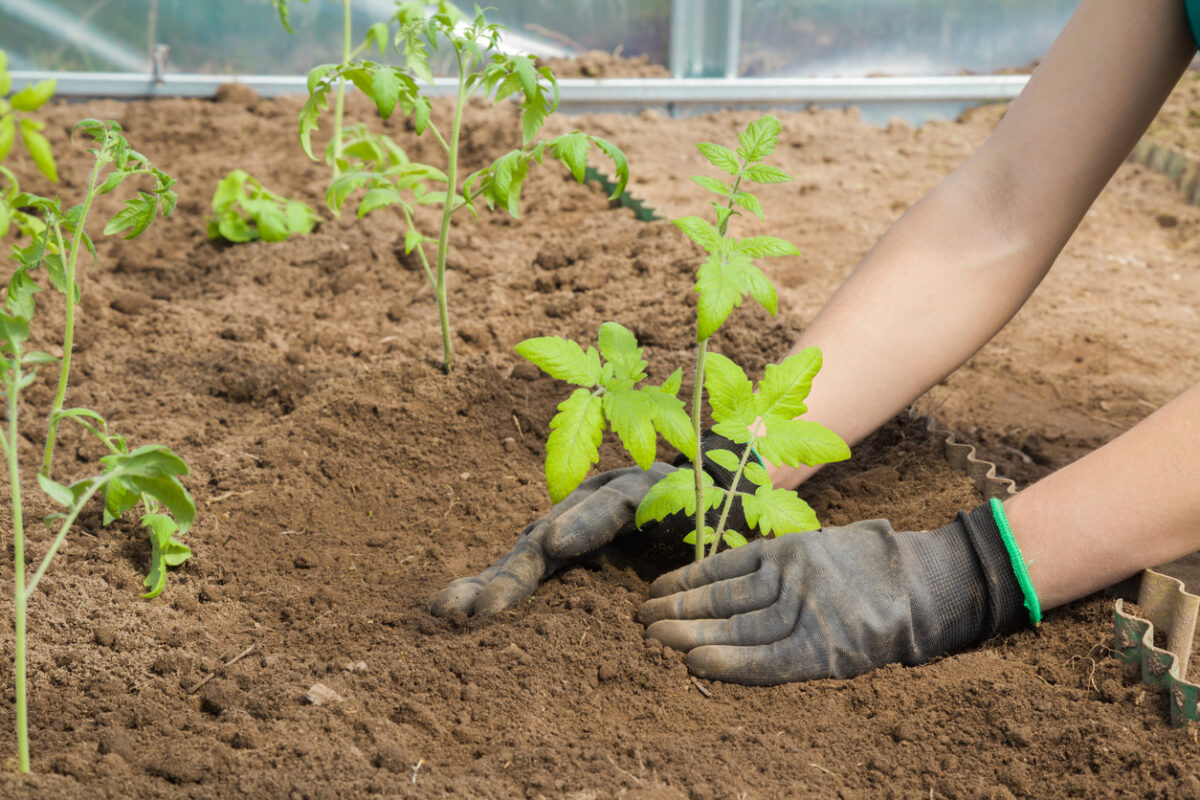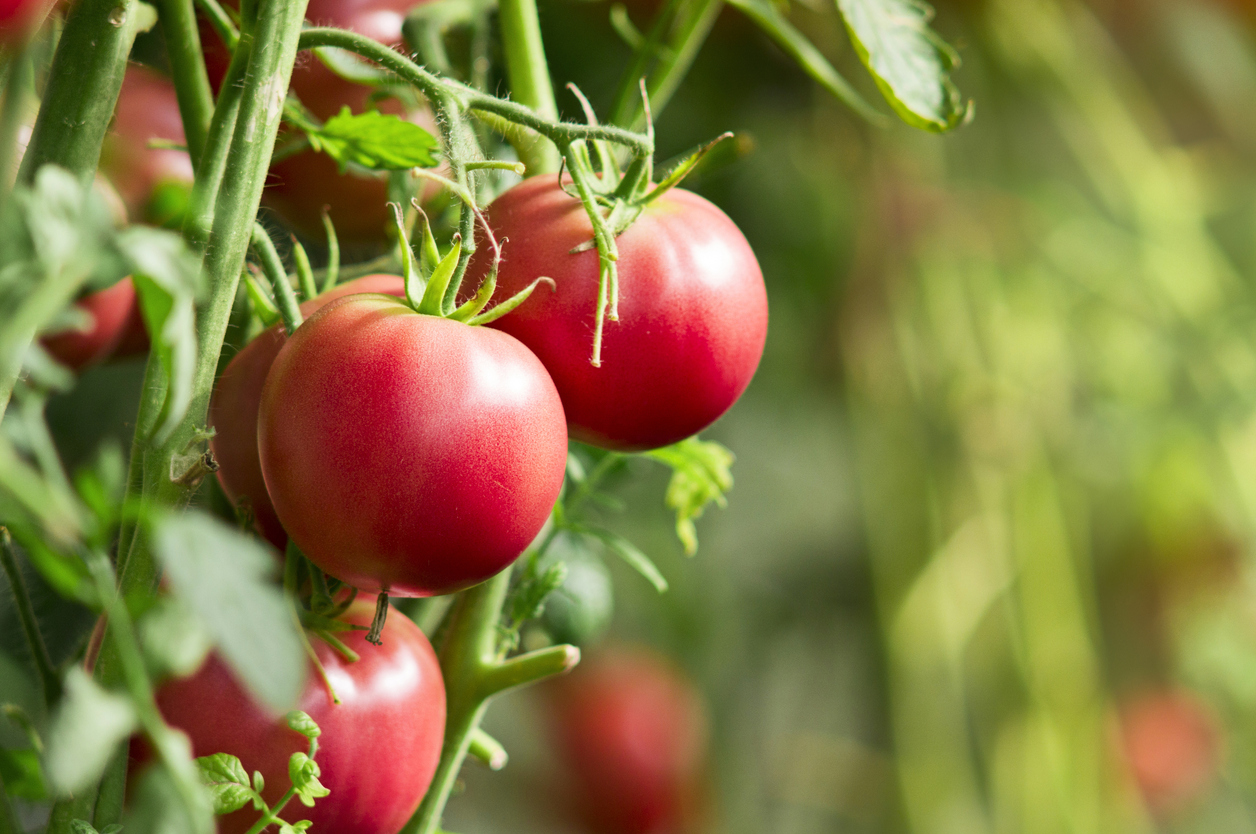We may earn revenue from the products available on this page and participate in affiliate programs. Learn More ›
Tomatoes have long been one of the most popular vegetables for home gardeners to grow. They don’t take up much space, can be grown in containers, and typically produce a lot of fruit. They can be found in a vast number of sizes, shapes, and colors, including hybrid and heirloom tomato varieties.
Avid gardeners eager for a bumper crop of these juicy delights frequently evaluate how and when to plant tomatoes, as well as the best ways to care for them. Some green thumbs have determined planting tomatoes sideways to be the most effective method for producing superior fruit, and there are several reasons they might be right.
On Top of It All
A common gardening concern is choosing the right kind of soil for tomato plants. Digging a shallow trench or trough and placing tomato plants in horizontally, leaving only the top stems and leaves exposed, enables them to grow in the top layer of soil. Topsoil gets more water and fertilizer than deeper layers of soil and typically drains better, too. If your soil is less than perfect, allowing your seedlings to benefit from this nutritious, well-draining soil can significantly benefit your plants.
Even if your soil is ideal for tomato planting, remember that they are heat-loving plants. Planting at deeper depths where the soil is cooler slows their growth, making sideways planting a more optimal choice.
A Leg Up
By the time temperatures are warm enough to plant tomatoes, many seedlings and transplants that were started early become leggy. Weak tomato plant stems can flop over or even break. Planting tomato seedlings sideways helps eliminate this issue, since most of the stem will be buried. This also encourages more vertical roots, leading to increased stability as the plant grows.
Spaced Out

When tomatoes are planted too closely together, they can compete for nutrients, shade each other too much, and encourage the spread of fungal infection and insect infestation. Proper spacing provides air circulation and adequate sunlight exposure, which benefits plants and leads to increased fruit set. Luckily, an easy way to observe the 3-foot spacing rule is to plant tomatoes sideways in shallow trenches!
Ease on Down the Row
Planting tomatoes in a shallow trench means you have to do much less digging. That’s good news for a gardener’s back, especially if your soil is mostly clay or full of rocks.
Pruning the tomato plants is still necessary, but less pruning should be needed when they’re planted horizontally. Similarly, they’ll still need to be staked but should require less support—certainly not as early as tomatoes planted in the traditional manner.
Don’t Bug Me
Planting tomatoes horizontally in a trench encourages stronger root system growth, which helps the plants fight off pests and diseases. It also allows the plants to take up more water and nutrients, which keeps them healthier. Additionally, removing plant debris and lower leaves reduces cutworms, while spacing the plants farther apart by trenching discourages pests from hopping from plant to plant.
Step by (Sideways) Step: How to Plant Tomato Seedlings Sideways

If you’re convinced that planting tomato plants sideways is the way to go in your garden, here’s the step-by-step process:
- Remove the lower leaves from a hardened-off tomato plant. Only the top branches and leaves will be above the soil when you’re done planting.
- Dig a trench about 4 to 6 inches deep, with one end slightly deeper for placement of the root ball. The trench length should be about two-thirds the height of the plant.
- Lay the plant on its side in the trench at a right angle, with the top branches and leaves resting on top of the soil.
- Cover with soil. Add compost at this time to improve your soil’s quality.
- Water thoroughly, taking care not to get the tomato plant’s foliage wet, as that can lead to fungus growth.
- Place stakes, tomato cages, or other types of support in the soil before the roots grow. Do not tie the plant to any support until it has started growing vertically.
- Mulch with straw or wood chips to reduce the spread of leaf diseases.


